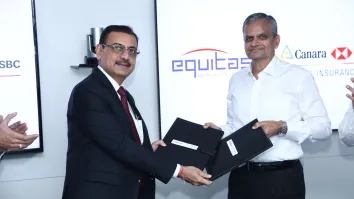Supporting trade finance in Asia
By Vincent O'Brien61% of respondents to the ICC Banking Commission’s latest Global Survey reported a shortfall in global trade finance. And US$700 billion of the unmet demand comes from developing Asia. Here we examine the measures that can be taken to address the trade finance gap across the world’s largest continent.
Since the financial crisis, a global trade finance gap – currently estimated at US$1.6 trillion by the Asian Development Bank (ADB) – has presented a considerable barrier to global trade flows.
In particular, with US$700 billion of unmet demand in developing Asia, this needs to be addressed to help ensure the region’s huge potential can be realised. Certainly, Asia has the consumer base, the companies, and a hunger for growth. All it needs is the funding.
A risk-aligned balance
The first step in tackling this issue is to stop the funding gap expanding further still. Finding a middle ground when it comes to regulation is a good place to start.
Indeed, while considerable improvements and a shift towards more well-adjusted regulatory treatment of trade finance have been made in recent years, 77% of respondents to the ICC Banking Commission’s 2016 Global Survey still consider Basel III requirements a significant impediment to trade finance. Clearly, further work still needs to be done, and increased collaboration and dialogue will be key in helping to drive forward developments in this respect.
Year on year since the financial crisis, there has been a positive credit risk and default experience for trade finance products – and corresponding regulatory treatment should increasingly reflect this. According to the ICC’s 2015 Trade Register, the transaction default rate for short-term export letters of credit (L/Cs) was at 0.01% between 2008 and 2014 – the equivalent of an Aaa or Aa Moody’s rating.
In addition, the Trade Register shows that for transaction and exposure weighted default rates, aside from North America, Asia-Pacific (APAC) observes the lowest default rates, at just 0.29% (the rate in North America is 0.12%). Aligning regulatory proposals to the real risk-weightings of trade finance would go some way to ensuring those who operate in the industry – particularly in low risk regions such as APAC – can continue to do so.
Of course, regulation isn’t the sole cause of the trade finance gap. 90% of Survey respondents cited the cost of compliance as a key barrier, with 40% reporting the termination of banking relationships due to the capacity required for compliance requirements, such as anti-money laundering (AML) and know-your-customer (KYC).
Certainly, in order to be effective, compliance must be strict. Yet, there are opportunities to improve the efficiency of such processes and increase the understanding of particular nuances – such as the differences between client KYC and non-client due diligence expectations. The way banks understand and respond to compliance could perhaps make it less of a hindrance to their processes and capacity for trade finance.
Sourcing finance
With respect to filling the funding gap itself, multilateral development banks (MDBs) have considerably ramped up their efforts in this respect. In fact, 75% of Survey respondents perceived MDBs as helpful in addressing trade finance gaps.
ADB’s Trade Finance Program (TFP), for instance, fills market gaps for trade finance by providing guarantees and loans via over 200 banks. Since 2004, the TFP has supported more than 12,000 transactions across the region, valued at over US$23.1 billion, with over 7,700 of these involving SMEs.
The Survey data also shows that Export Credit Agencies (ECAs) provide support for export finance, and alternative sources of liquidity are flowing into the ECA space. 37% of the Trade and Export Finance (TXF)-conducted survey respondents had successfully conducted business with institutional investors relating to export finance – an increase from 30% the previous year.
That said, the Survey also shows areas where MDBs and ECAs could do more. While the success of such measures in “Advanced Asia” (Hong Kong, Japan, Korea, and Singapore) is clear, the response is mixed in India and China, for example; both of which are heavily dependent on trade.
Figure 1: Extent to which trade finance programs of MDBs and ECAs narrow trade finance gaps, by region

Developing digitisation
Finally, in Asia in particular, digitisation could also help to close the gap. The Survey showed that APAC has taken the lead on the transition to digitisation, with 8.6 billion connected devices and a robust digital infrastructure.
Digitisation reduces the costs and complexity of trade finance by allowing banks to automate their processes. In particular, the convergence of processes – such as generating purchase orders and invoices, and sanction checks – improves working capital management and reduces operational risks and costs.
Despite this, overall uptake is slow – with only 7% of Survey respondents claiming that it is widespread, and one-fifth reporting there is “none at all”. Expanding the uptake of digital trade finance solutions will help to enhance performance and the capacity of banks to provide trade finance.
At US$1.6 trillion, the global trade finance gap can’t afford to get any bigger. Now is the time to ramp-up efforts to fill it.


















 Advertise
Advertise










